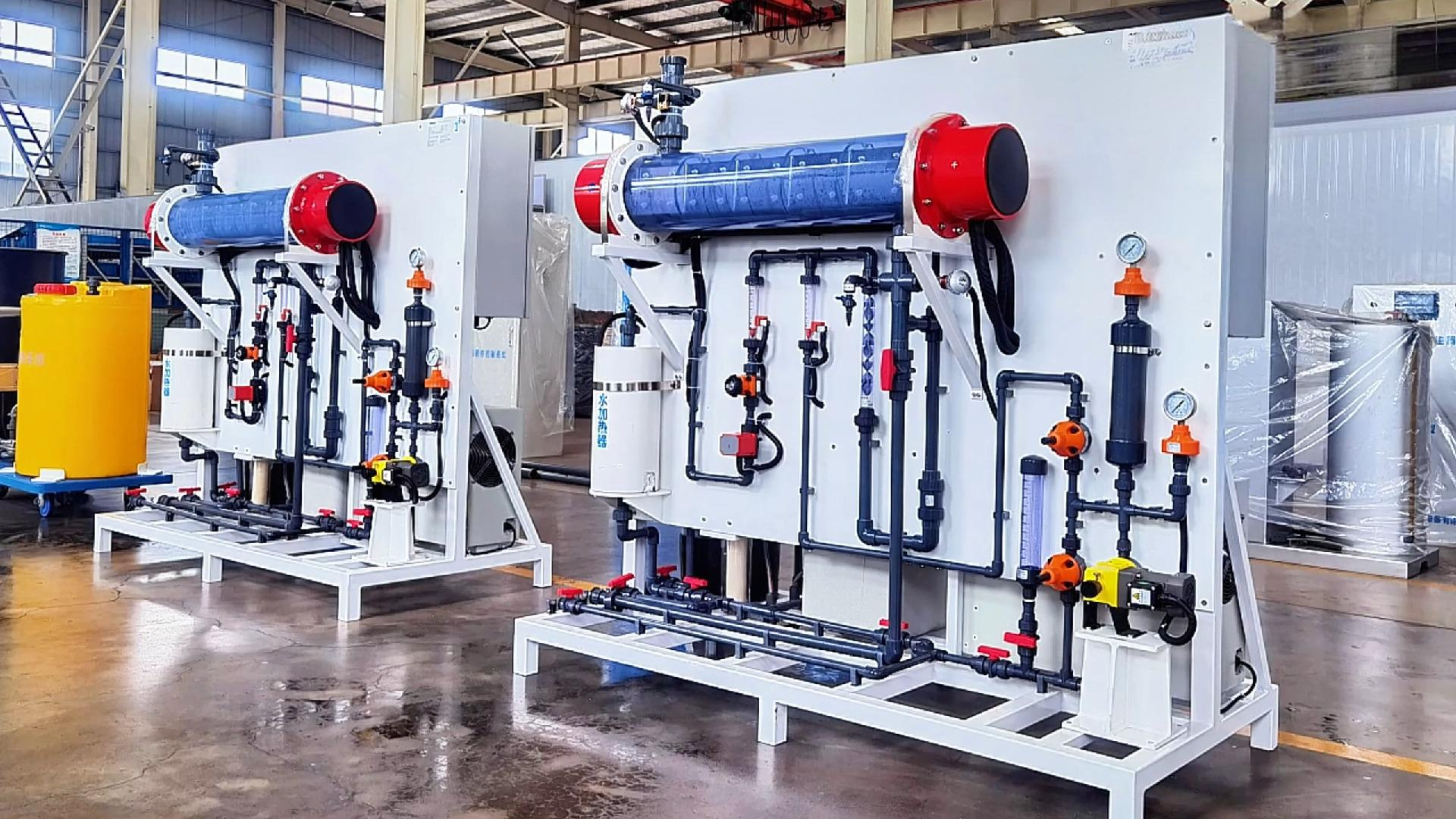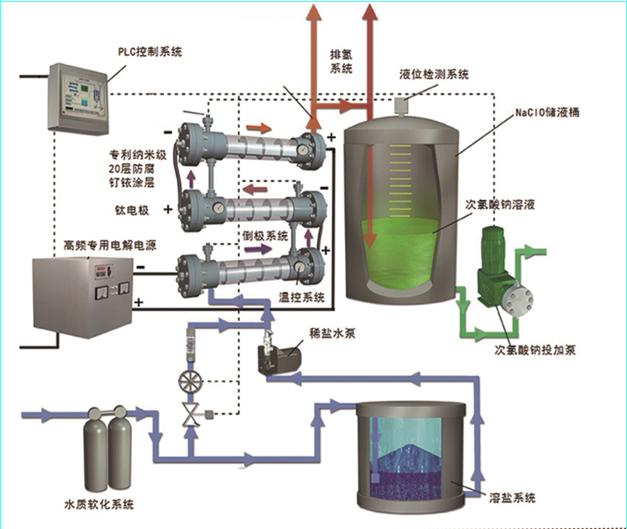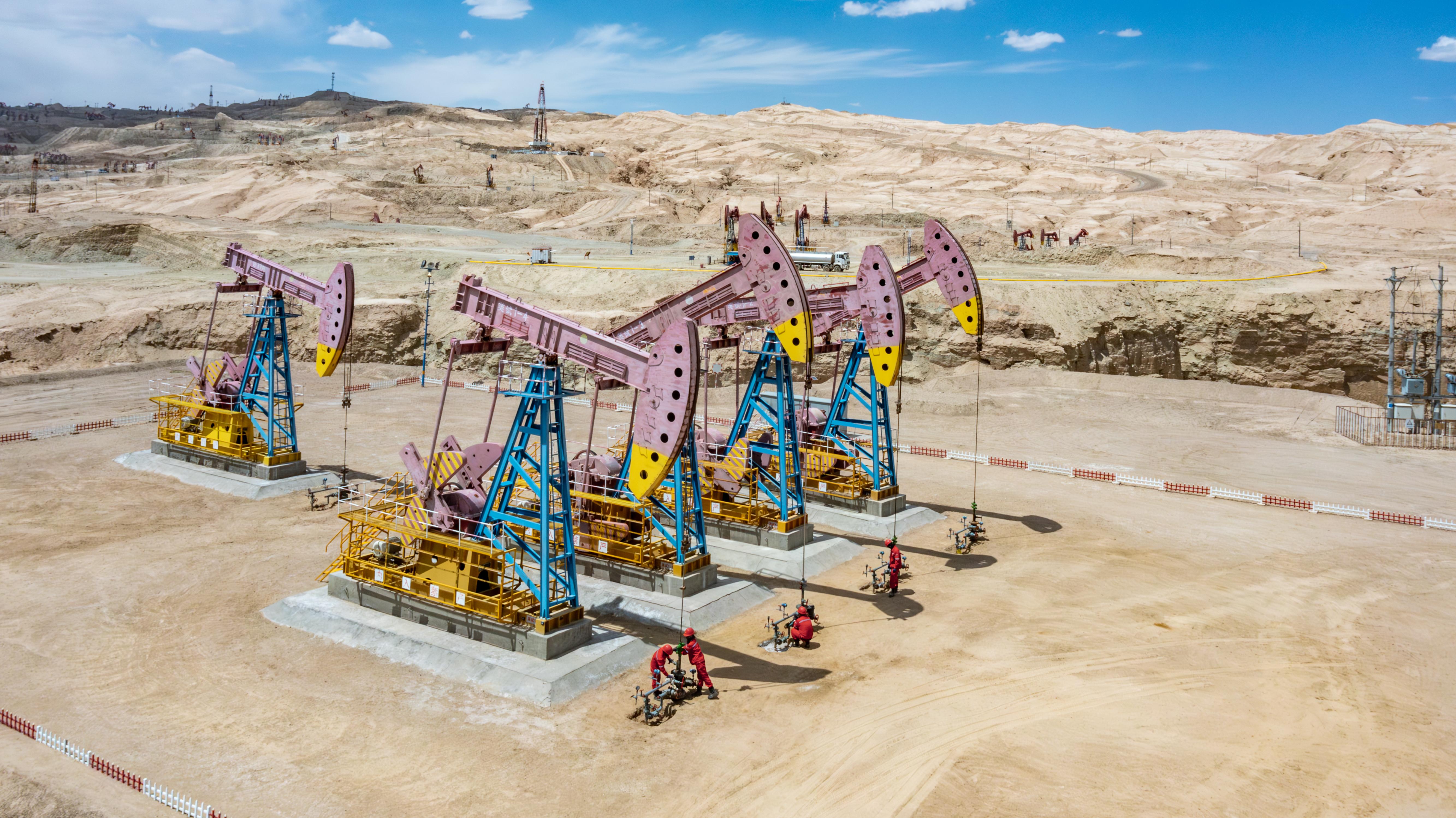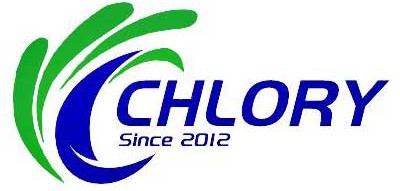With the continuous rise in energy demand, oilfield development, as a crucial part of the energy supply chain, relies on technological innovation and equipment upgrades for the sustainable development of the industry. The sodium hypochlorite generator of Chlory Company has emerged in the field of oilfield development with its characteristics of high efficiency, safety and environmental protection, and has become an important technical equipment for improving the efficiency and quality of oilfield operations.

Working Principle and Characteristics of Sodium Hypochlorite Generators
A sodium hypochlorite generator is a device that produces sodium hypochlorite (NaClO) solution through the electrolysis of dilute brine. During this process, sodium chloride (NaCl) in the salt reacts with water (H₂O). The fundamental working principle is based on an electrochemical process. In the electrolytic cell, at the anode, an oxidation reaction occurs where chloride ions (Cl⁻) lose electrons to form chlorine gas (Cl₂). At the cathode, a reduction reaction takes place, where water gains electrons to produce hydrogen gas (H₂) and hydroxide ions (OH⁻). Subsequently, the generated chlorine gas reacts with hydroxide ions, ultimately resulting in the formation of sodium hypochlorite. Sodium hypochlorite, as a strong oxidant, exhibits broad - spectrum bactericidal, disinfection, and oxidation capabilities. It can effectively eliminate bacteria, algae, and other microorganisms in water, and its disinfection by - products are safe and harmless, meeting environmental protection requirements.

Water Quality Issues and Challenges in Oilfield Development
During oilfield development, water injection is a vital method for maintaining formation pressure and increasing oil recovery. However, the quality of injected water directly affects the normal operation of the water injection system and the production efficiency of the oilfield. Injected water in oilfields usually contains a large number of microorganisms such as bacteria, algae, and sulfate - reducing bacteria (SRB). The rapid proliferation of these microorganisms in the water injection system can lead to the formation of biological slime, blocking water injection pipelines and formation pores. This reduces water injection efficiency, increases water injection pressure, and may even cause a decline in oil well production. In addition, substances such as dissolved oxygen and hydrogen sulfide in the water can react chemically with metal pipelines, causing pipeline corrosion, shortening the service life of water injection equipment, and increasing maintenance costs and safety risks.

Specific Applications of Sodium Hypochlorite Generators in Oilfield Development
Disinfection of the Water Injection System
The sodium hypochlorite solution generated by the sodium hypochlorite generator can be directly added to the oilfield water injection system for disinfecting the injected water. Sodium hypochlorite can quickly destroy the cellular structure of microorganisms, denature their proteins, and thus kill bacteria, algae, SRB, and other microorganisms. By regularly adding sodium hypochlorite solution to the water injection system, the growth and reproduction of microorganisms can be effectively controlled, the formation of biological slime can be reduced, the smoothness of water injection pipelines and formation pores can be ensured, and the stable operation of the water injection system can be maintained.
Corrosion Inhibition of Pipelines
In addition to its disinfection function, sodium hypochlorite can also undergo redox reactions with corrosive substances such as hydrogen sulfide in the water, oxidizing them into harmless substances like sulfates, reducing the concentration of corrosive substances in the water, and thus inhibiting pipeline corrosion. In the oilfield water injection system, due to the continuous action of sodium hypochlorite, a protective film forms on the surface of metal pipelines, further slowing down the corrosion rate, extending the service life of water injection equipment, and reducing the maintenance costs of oilfield development.
Increase in Oil Recovery
High - quality injected water is conducive to increasing oil recovery. After treatment with sodium hypochlorite, the microbial content in the injected water is significantly reduced, and pipeline corrosion is effectively controlled. This enables the injected water to be more evenly injected into the formation, improving formation permeability, and thus promoting the smoother flow of crude oil towards the oil well, increasing the oil production.
Application Advantages of Sodium Hypochlorite Generators in Oilfield Development
High Efficiency
Sodium hypochlorite generators can rapidly produce high - concentration sodium hypochlorite solutions. Once added to the water injection system, they can quickly exert their bactericidal, disinfecting, and corrosion - inhibiting effects, rapidly improving the water quality of injected water and ensuring the normal progress of oilfield production.
Safety
Compared with traditional chemical agents, sodium hypochlorite generators produce sodium hypochlorite solution on - site, avoiding potential safety hazards such as leakage and explosion during transportation and storage. Moreover, the disinfection by - products of sodium hypochlorite are safe and do not pose a threat to the environment or human health.
Economy
The raw materials for sodium hypochlorite generators are merely salt and water, which are widely available and low - cost. Additionally, the equipment has low energy consumption during operation and is easy to maintain, effectively reducing the development costs of oilfields and improving economic benefits.
Environmental Friendliness
Sodium hypochlorite generators do not produce harmful gases or waste during operation, conforming to national environmental protection policy requirements. They contribute to the green development of oilfields and promote the sustainable development of the industry.
Application Cases and Effect Analysis
Take a certain oilfield as an example. Before the adoption of sodium hypochlorite generators, the water injection system suffered from the rapid proliferation of microorganisms, serious blockage of pipelines by biological slime, a continuous increase in water injection pressure, and a decline in oil well production. To address these issues, the oilfield introduced sodium hypochlorite generators for water injection system treatment. After a period of operation, the numbers of bacteria, algae, and SRB in the water injection system decreased significantly, the formation of biological slime was effectively controlled, the water injection pressure returned to normal, and the oil well production increased significantly. Meanwhile, the pipeline corrosion rate slowed down remarkably, the number of equipment maintenance operations decreased, and a large amount of maintenance and replacement costs could be saved annually for the oilfield.
Future Development Trends and Prospects
With the continuous advancement of science and technology, the application of sodium hypochlorite generators in oilfield development will continue to be optimized and expanded. Chlory Company has been dedicated to the research and development and production of sodium hypochlorite generators, On the one hand, the equipment will develop towards intelligence and automation. Through advanced control systems, precise adjustment of the amount of sodium hypochlorite generated can be achieved, improving the stability and efficiency of equipment operation. On the other hand, with the increasingly stringent environmental protection requirements, sodium hypochlorite generators will be integrated with other environmental protection technologies to further enhance the green level of oilfield development. In addition, based on in - depth research on the interaction mechanisms between sodium hypochlorite and various substances in oilfield development, it is expected to develop more targeted application solutions, providing more efficient and reliable technical support for oilfield development.
